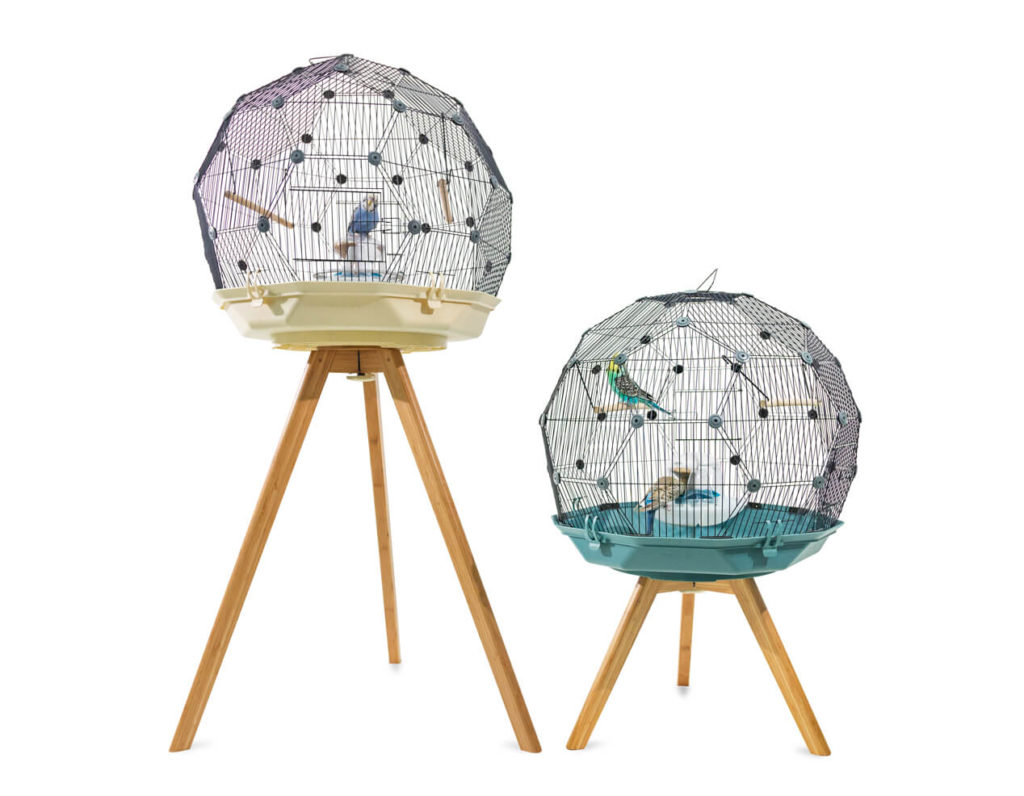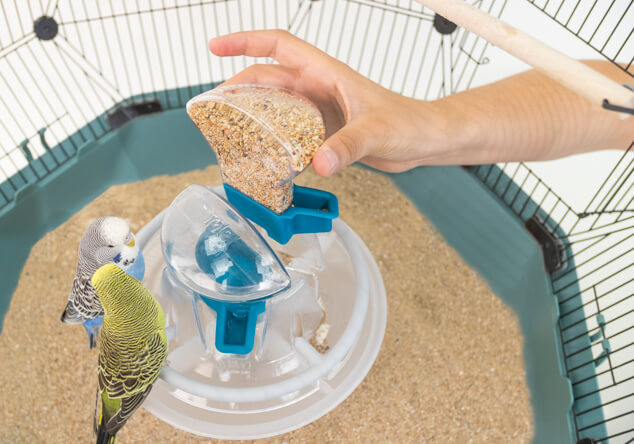Giving Your Budgie and Finches the Best Possible Living Space

What do you need from a bird cage?
The main thing is to give your budgies and finches a space in which they can happily do what a bird has to do – eat, sleep, fly, perch, and chill out.
So, your check list might read something like this:
- Full flying access to the entire cage
- Fantastic feeding station
- Lots of perches and usable ‘corners’ for taking time out
- Easy access to and from the cage
- Fantastic design that makes it a standout feature in the room.
And that pretty much summarises the new Geo – the first great leap forward in cage design for 100 years.
The Geo Bird Cage for Budgies, Finches and Canaries
Until the arrival of the Geo, bird cages hadn’t changed much since the early 20th century.
But why did we need another innovation in cage design, you may ask? For the simple reason that when keeping a pet, its welfare and happiness are the top priorities.
So, with this in mind, could the old, rectangular-type standard bird cage be improved upon?
The answer is yes – and then some!
The unique geodesic-dome shape of the Geo, and its central feeding station, are the stand-out features. To explain how we got there, let’s take a brief sprint through previous approaches to cage design.
Bird Cages – from Small Cells to Big Sales
Bird cages have a long history, and their basic shape and function has evolved over the years.

In the beginning a cage was simply a cell in which the feathered inmate – usually a finch, bunting or starling – was expected to sing its little heart out. These small cages were made from wicker or other light, pliable wood. By the 1830s cages were being made from metal and wire. The basic design remained bell-shaped (the kind of thing seen in Tweety Pie cartoons).
This design lingered into the later 19th century when keeping birds as pets underwent a huge surge in popularity, with budgies becoming the pet bird of choice for many. The cages were often ornate, but the emphasis was on decoration, rather than keeping the birds happy. These cages were all height and no width, usually.
By the early 20th century, rectangular, wider bird cages were mass produced – the kinds of things still sold as the standard finch or budgie cage in most pet shops. Design was, at last, part of the overall concept – seed trays that slot into the cage sides, water bottles that attach via clips, better, wider doors, removable bases for easy cleaning.
With a wide range of cage sizes, it meant you could ensure that the dimensions were right for the number of birds you owned. So what was left improve – why do we need the Geo?
Why the Geo Cage is Better for Pet Birds
The geodesic dome shape of the Geo cage provides the ideal dimensions for birds to move around in. When flapping and flying in a rectangular cage, birds don’t have much front-to-back space – the flying area is limited to the length of the cage. Also, birds cannot negotiate 90 degree corners: these are dead space when it comes to flying.
So, if you were to map the total usable flying area, you might be surprised to find that in a standard rectangular cage of 90x60x40cm (220,000 cubic centimetres) a budgie or finch can only make use of one tenth of the area for flying.
In contrast, the Geo’s 62x60x60cm (223,200 cubic centimetres) is nearly ALL flying space. There are no front-to-back limited space issues, and no right-angled corners to prevent a bird stretching its wings.
Birds are happier if they can fly outside the cage
In any indoor cage, a bird is only able to fly in a limited space. Ideally, all pet birds should be allowed to free-fly in the room – and we have advice on making this a safe and happy pastime in our Omlet Budgie Guide.
The Geo makes free-flying a breeze – it has two wide doors allowing your birds easy access to and from the cage.
Cutting Corners
Do birds need corners to hide in if they’re startled or afraid of something?
Yes and no. It’s more about the position of the cage. If the birds are in the middle of a room completely surrounded by activity they will have nowhere to hide if they’re feeling nervous. That’s why a cage – including the Geo – should be close to a wall or a corner of the room if possible.
Also, the Geo does have corners – lots and lots of them, just not the right-angled corners of a standard cage. You’ll still find your birds using these multiple corners to rest and take stock.
Looking good, feeling good
The Geo’s marriage of great looks and ultimate bird-friendly design set it apart from anything else available.
One of the most eye-catching features is its central feeding station. It’s a joy to watch birds gather together and feed, and the Geo has an extra bonus in that most of the discarded husks and dropped seeds fall into the feeding station’s hopper for easy cleaning.
The rounded shape of the Geo – not circular, but a collection of many flat sides – makes it a striking feature in the room. But, most importantly, it’s a striking feature that doubles as the perfect environment for your pet budgies and inches.
This entry was posted in Budgies
3 replies on “Giving Your Budgie and Finches the Best Possible Living Space”
It allows your pet to rest its body and recharge its batteries. It is estimated that a budgie can sleep between 10 and 12 hours a day. A happy budgie is one that benefits from this rest time in the best conditions.
Keeping Zebra Finches and Budgies Together As mentioned above, Canaries, Zebra Finches and Budgerigars are the three most popular cage birds throughout the world. Because of this one would assume that they will all get on well together. Zebra Finches, being more confident in themselves, actually fare a lot better with Budgies than the Canary does and in an aviary or bird house the two species will go about their days seemingly without noticing one another.Again, be sure to provide enough space in your cage or aviary.
Canaries and Zebra finches can only live together if there’s lots of space Even if you have a mix of docile birds, they still need their space and the cage should be no less than 45 inches in width, preferably more. In a cage like this you will be able to house the following finches together: Canaries, Bengalese, Star, Gouldian, Double-Barred and Plum-Headed, Chestnut Munias and Parrot Finches.